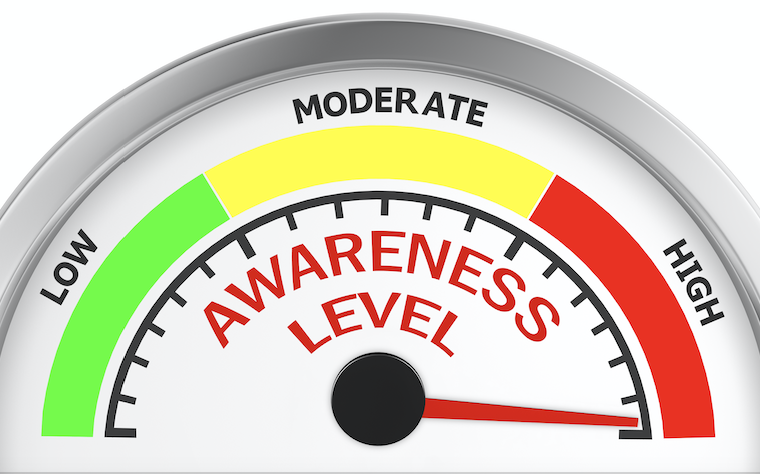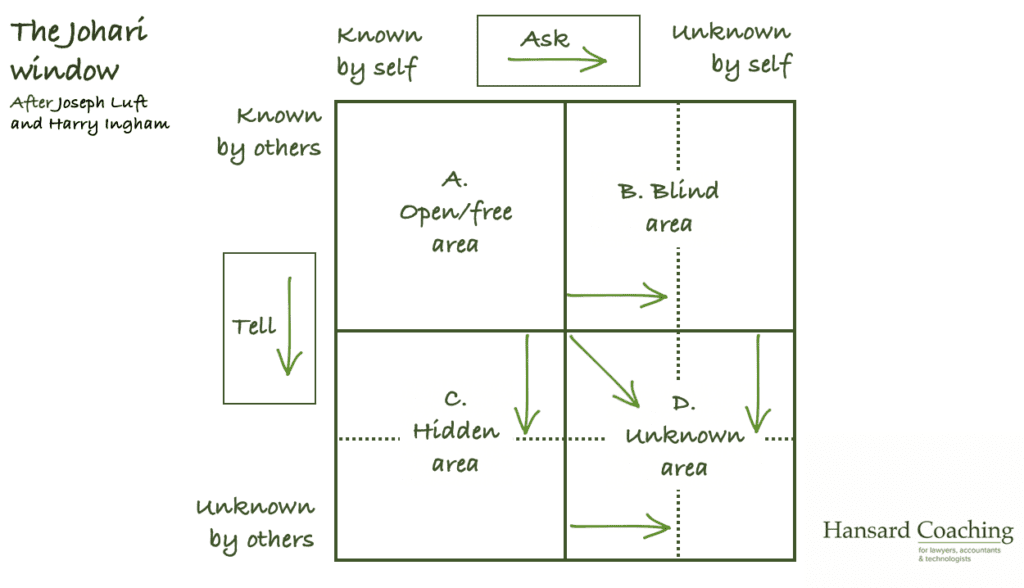
Growing your self-awareness to empower you as a leader
The internet is awash with articles evangelising the importance of self-awareness. In the coaching I do I see a clear link between an individual’s self-awareness and their ability to develop as a leader.
One proven method to encourage self-awareness and accelerate personal development is to use the Johari window, designed by American psychologists Joseph Luft and Harry Ingham (“Jo” and “Hari”). It’s a fantastic model but can take a little time to get your head around, so stick with me as I walk you through it!
The approach is designed to sharpen an individual’s self-perception with the support of others. It has two ideas at its core: firstly, that the trust of others can be deepened by sharing information about yourself with those around you; the more you share the deeper your relationships. Secondly, that awareness of self will grow as others give you candid feedback; feedback received deepens self-awareness.
The axes of the model represent, on the one hand, your personal information known and not known by yourself, and on the other, your personal information known and not known by others. Jo and Hari encourage you to tell others what they might not know about you, and to ask others what you might not know about yourself.

The working hypothesis is that, as key information transfers in both directions, the “open/free area” (area A – i.e. your self-awareness and the awareness of you of others) grows. This is because trust is built with effective listening, sharing information and receiving feedback from other members of the group. Here information and communication can flow freely and the larger the area the more effective and dynamic relationships will be. The better the flow of information the more self-awareness can grow and the more effectively an individual operates.
So, be brave and share past failures as much as past successes; reveal when you are nervous or anxious. Soon others will do the same and team bonds will strengthen.
Area B is a leader’s “blind spot”. This is information a group will know, but the leader will be unaware of it. Here, individuals will interpret you and how you behave in a different way than you might otherwise expect. Obviously, the idea is to reduce this blind spot and this can be achieved through better communication, more feedback and the growth of self-awareness. In other words, share, share, share.
Let’s crack on to the bottom half of the model; stick with me, I promise you it’s worth it.
Area C is the “hidden area”, and often referred to as the “façade”. This is where there is information known to you, but you keep it unknown by others. It might be personal information that you are reluctant to share and can include past experiences, feelings, fears and failures. Very often we keep this private as we are concerned as to how this might affect the relationships around us. So, take some risks and divulge more than you normally would; others will reciprocate.
Area D is the “unknown area” and is information which neither we, nor those around us are aware of. This could be a trauma or unknown events from the distant past. The danger of this unknown area is that if these experiences surface in times of stress, they may adversely impact relationships with those around us. Un-picking this area by bringing past challenges into our consciousness gives us a better chance of managing their impact as they surface.
By using the Johari window, we can all understand more about ourselves and become more aware of our blind spots, and the areas that we deliberately hide from others. Over time, through self-reflection, high-quality feedback and strong communication we can grow the open area and reduce what we hide either from others or from ourselves.
In essence, the more open we are, the more we understand ourselves and are understood by others, the more effective we can be with our colleagues. It’s a fascinating tool and worth using with the teams in which you operate – I hope you enjoy using it!